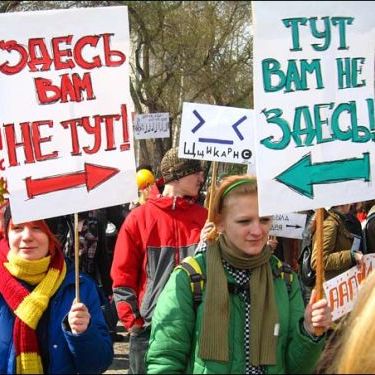(Co-authors: Alexander Cooley, Marlene Laruelle) Russian strategy toward Central Asia generates great interest in Western academic and policy circles, but few analytical nuances. Depending on the source, Russia is often characterized as wanting to dominate or control the region, to reconstitute the Soviet Union, or to obsessively counter the influence of the West and/or a rising China. Although many note the numerous links, soft power mechanisms, and levers Russia utilizes in its dealings with Central Asian states, few discuss the strategic trade-offs involved in Russia’s Central Asian policy nor explicitly address the evolution of its strategic choices.
This memo is a short version of a longer project that applies the analytical insights of an emerging literature on the logics of hierarchy and clientelism in international relations theory to the case of Russian strategy of influence in Central Asia. Although several excellent studies of Russian foreign policy have analyzed Moscow’s complicated relationship with its near neighbors, most do so under the assumption that the post-Soviet states are balancing or bandwagoning under anarchy, according to realist theories, or are developing a broader Eurasian security community, in line with constructivist or sociological approaches. Within both these frameworks, disagreements between the post-Soviet states and Moscow are taken as evidence of the “failure” of Russian policy or as examples of its declining regional influence.
In fact, we argue, recent Russian policy toward Central Asia marks not a decline but a distinct shift in strategic logic—from one that emphasizes regional mediation and maximizing influence across the whole region to a more focused logic of hierarchy that seeks to support selected states with more focused instruments, take sides in regional disputes, and push for deeper integration within regional security and economic organizations that have narrower memberships. As scholars have argued, the logic of hierarchy is not one of geopolitical balancing but of pursuing “divide and rule”—supporting a client state and backing its claims in local disputes or conflicts in exchange for securing its political loyalty. From this perspective, Russia seems to be abandoning its previous doctrine of exerting general regional influence in favor of pursuing more focused influence and integration with Kazakhstan, Kyrgyzstan, and Tajikistan.
The Changing Logic of Russian Strategy in Central Asia: From Privileged Sphere to Divide and Rule?
PONARS Eurasia Policy Memo No. 261
by Alex Cooley and Marlene Laruelle
July 2013










